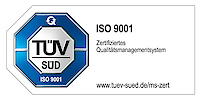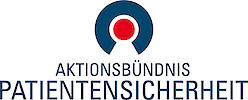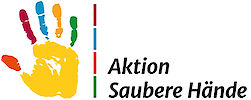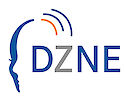Addictions
"Addiction is a disorder and not a will or character weakness"
One distinguishes the non-substance dependent diseases such as pathological gambling, from the substance-linked dependence diseases, which can arise through the use of narcotic drugs such as alcohol, nicotine, drugs, heroin or cocaine .
A look at the history of art and literature shows that the use of narcotic drugs can unleash both creative and destructive forces.
For example, the Nobel Prize laureates Hemingway, Steinbeck or Faulkner were addicted to alcohol. The French poet Baudelaire says: "Intoxicate yourself with wine, with verses or with virtue." He himself was addicted to "The Green Fairy" absinthe, a mixture of alcohol and herbal extracts, which was discussed in the works of Manet, Picasso and Zola. Common in intellectual and artistic circles was also Laudanum (opium tincture, called "Stone of Immortality" by Paracelsus), which was originally mixed by Paracelsus from wine and opium, whose most famous consumers included the British Coleridge and de Quincey (" Confessions of an English Opimum-eater "). Picasso once described to his friend Cocteau: "Nothing smells as little stupid as opium. Maybe the circus and a port. " The latter replied, "The alcohol causes seizures of madness. The opium evokes seizures of wisdom. " At the beginning of the 20th century, opium caves were spread out from China to all Western countries – smoking salons of the Morphinists, among them well-known intellectuals and artists. Here in this country, heroin was produced from opium and initially sold as a cough syrup. After the Second World War and especially after the Vietnam War, the number of heroin addicts grew strongly worldwide, as many soldiers had come into contact with morphine and heroin. In the rock, punk and jazz scene of the 1970s and 1980s, heroin was a popular drug that claimed many victims, including the singer Janis Joplin, symbol of the hippie era. Today there are about 180,000 heroin addicts in Germany.
More widespread than heroin is the use of cocaine, which, as crack cocaine, has the highest potential for addiction of all illicit drugs. The most common addictive substance, however, is the nicotine contained in tobacco. Every year in Germany about 140,000 people succumb to the deadly consequences of smoking.
According to the criteria published by the World Health Organization (WHO), a dependency syndrome exists if three of the six symptoms listed below are present at the same time:
- Fierce craving for the drug
- Loss of control in terms of quantity and duration of consumption
- Physical withdrawal Symptoms
- Tolerance development (dose increase or loss of effect)
- Abandonment of original interests or activities (the drug becomes the centre of one´s life)
- Continued consumption despite negative social and health consequences
People react very differently to narcotic drugs. For example, alcohol consumption in many people leads to high spirits and relaxed socializing, while others lead to deep melancholy or risky behavior.
The risk factors that contribute to the development of a dependency disorder are manifold and can be very different in individual cases. Addictive drugs are often used to reduce the fear of failure or to relax after stressful situations. This can result in a continued "self-treatment" that leads to a dependency disorder.
At risk from the development of a dependency disorder are in particular people who do not even notice how the addictive agent creeps to become an integral part of their lives, until after all a life without this addictive drug is no longer possible, because otherwise severe withdrawal symptoms are threatening.
At this point, a personal conversation with the GP, in an addiction counselling centre or in our outpatient clinic can clarify whether there is a dependency disorder and the desire to break through the vicious circle of dependence through targeted treatment.
An important risk factor for the emergence of an addiction is the presence of another psychiatric disorder, especially anxiety disorders and depressive disorders, but also chronic pain syndromes. People often believe that by successfully treating these disorders, their dependency disorder would disappear on their own. This is usually not the case, however, because the dependence has long since become independent and requires additional competent treatment.
The treatment is often preceded by the motivating advice of the GP, in an addiction counselling facility or in our outpatient clinic. If there is a dependency syndrome and there is a desire for renunciation of the drug, a qualified withdrawal treatment is recommended at one of our stations, which is often a further rehabilitative measure (stationary or outpatient weaning therapy for the development of a drug-free lifestyle) and an outpatient long-term care (e.g. the visit of self-help groups and soziotherapeutiical institutions).
Each stationary treatment for addiction is always embedded in a multidimensional treatment plan consisting of withdrawal-relieving drug therapy, supportive psychotherapy in individual interviews and groups, accompanying therapies (including occupational therapy, movement therapy and relaxation therapy) as well as social-pedagogical support.
Withdrawal should under all circumstances take place under medical supervision and not independently in the domestic environment in order to ensure the protection against possible complications and the monitoring of medical risks.
In Germany, about 1.6 million people are suffering from drug addiction. Women and older people are particularly affected by this. One can be addicted to many medications, including sedatives (sedatives), sleeping pills (hypnotics), stimulants and painkillers (analgesics).
The peculiarity of a drug dependence is that the patients take the drug selectively for the relief of a physical or psychological symptoms from the beginning, but in this case after weeks a physical dependence can arise: Patients have the impression that their original symptoms are worsening as they increasingly only take their medication to relieve their withdrawal symptoms.
Description of a person concerned:
"Originally, I was prescribed this sedative by my doctor when I had a tremendous amount of stress in my career and suffered from massive fears of failure. That also helped in the beginning. But without medication, nothing would work very soon. I immediately had heart palpitations, hot flashes and was very tense inside. It became more and more difficult to persuade my doctor to continue to prescribe the pills. At some point I had several doctors who knew nothing about each other. I also tried several preparations. My environment did not witness anything. Later I fell off and on, then the dosage didn't always work out like that. "
According to the federal government's search report 2011, there are about 1.4 million people in Germany with an alcohol addiction, of which only about 10% take up therapy. Clinical practice also shows that alcohol patients in Germany have long periods of time before they receive adequate treatment. Shame and trivialise play a role in this. Many years of excessive alcohol consumption are known to have serious long-term consequences. According to the report, one in five deaths between 35 and 65 years is alcohol-induced.
Our clinic offers both stationary, day-patient and outpatient services for patients with an alcohol problem. An important focus in the context of detailed diagnostics is the clarification and treatment of possible concomitant diseases such as affective disorders and their guideline-oriented treatment in our clinic.
If you are unsure which of the many treatment options is right for you or if you need specific help at all, take an individual consultation in our special outpatient clinic for people with alcohol addiction. The specialist outpatient clinic offers the opportunity to show patients with alcohol problems an uncomplicated way to a qualified treatment. The outpatient clinic, if necessary, can also initiate a stationary therapy and, if appropriate, daily clinical treatment at the hospital of psychiatry and psychotherapy of the University Hospital of Bonn. We also help to find an adequate alternative.
Descriptions of those affected:
"I didn't want to admit that I'm addicted to alcohol for a long time. I was not often really drunk. That's all kind of creepy. At the end I needed the alcohol constantly, because of my trembling and the sweats. In the morning, otherwise I couldn't even be out of the house. Of course, I tried not to let this be noted. I always rejected a treatment. Talked to me, you can do it that way. I find it really hard to accept help. "
"After my first treatment, everything went really well for me first. I didn't drink any more and started to get my life back under control. But one evening I was in the circle of my old buddies and I just drank a glass. Unfortunately, it did not stay there. At some point I told myself, now it doesn't matter anyway. I was totally disappointed by myself, reproached me, ashamed of me terribly. I didn't want to go back to a treatment for a long time, because actually I know everything, what are they supposed to tell me new? "
In the case of a polyvalent addiction, the therapy target can also be the detoxication of co-used drugs under adjustment to the controlled ingestion of a substitute substance (substitution treatment).
For drug support in weaning treatment, the setting may be based on an opioid antagonist such as naltrexone after successful opioid detoxification.
For people with severe opioid dependence, a joint initiative with the Federal City of Bonn and the charities of Diakonie and Caritas established a special centre for diamorphous-based substitution treatment.















